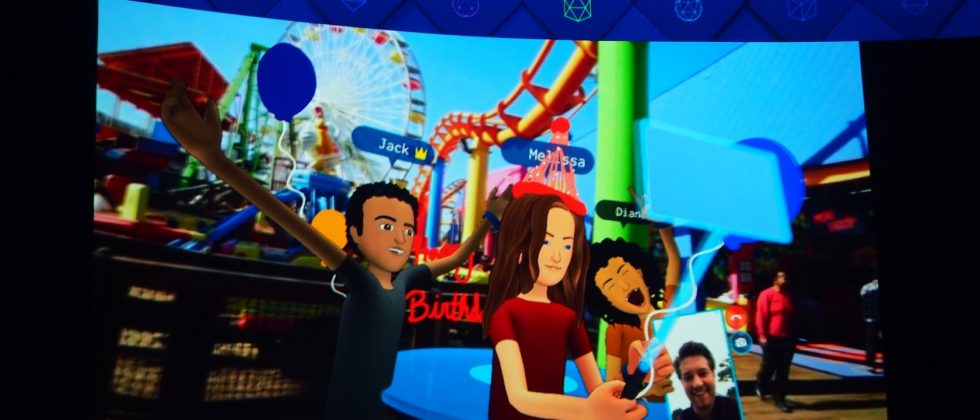4 VR Examples and Discussion Topics
Examples of Various Reality Technologies
Though Reality Technologies have become far more widespread, they are not yet necessarily a part of our everyday lives. To get a sense of what is currently possible and available, imagine yourself in the following scenarios:
You go to the cinema and rather than sit in a theatre with a group of people, you are instead handed a VR headset. An example of 360 degree entertainment, Invasion!, tells the story of two adorable bunnies who witness aliens landing on earth for the first time. This film was Emmy Winner 2017 for Outstanding Interactive and Nashville Film Festival Winner 2017 in the VR & 360 Film Competition. You might notice we only actually see one bunny in the below video. Can you guess where the second is?
Video: Invasion! Sneak peek
A close family member of yours has passed away. You know they’re gone but feel that you still have not experienced closure from the loss. Meeting You is the South Koran documentary directed and produced by Jong-woo Kim in which a grieving mother is reunited with her daughter in virtual reality. Read more in an article from Slate.
Video: Bringing the dead back to life clip from Meeting You
You are repairing a complex piece of machinery and need assistance. You put on an AR device and it maps animated information onto the device to guide you step-by-step through the process.
Video: Augmented Reality Training Demonstration – by Scope AR using the Epson Moverio BT-100
You are scheduled to be deployed to a complex military theatre of action where it would not be possible to recreate the engagement environment in the physical realm. You and your team put on a VR apparatus that produces a simulated representation of the engagement environment. The VR system enables your team to practice and refine your strategy through active participation and playback analysis.
Video: Virtual Reality: The Future Of Military Training
You have a young child who is diagnosed with a form of autism. You are frightened about how she will be prepared to get by in the world. As a parent, you wish there was a way you could see the world through her eyes to help her cope as she grows up.
So you locate a VR resource that helps you to understand how autistic people experience stimuli in the real world so that you can respond to your child’s reactions and needs.
Video: Autism TMI Virtual Reality Experience (Note: This is recorded so that it can be viewed in 360 VR using a Google Cardboard device. You will not be able to get the full experience from watching this video without wearing the device, but consider the immense value in having this kind of resource freely available on YouTube.)
You feel alienated from your peers and feel desperately lonely. You don’t like how you look, you are sometimes bullied, and you feel detached and withdrawn from the world. You have no place to go in your community that makes you feel like you belong to something meaningful.
So you put on your VR device and it transports you to a virtual world where you can appear to be anything you want – a different person, an animal, an alien. It gives you a newfound sense of freedom and comfort to interact with others in realtime, to make friends, do things together, or even change genders. Other participants seek you out to dance, chat, or flirt – an experience you believe could never happen in real life. The virtual world is beautifully fulfilling in ways the real world cannot be.

As an educator for medical students, you want to enable them to experience empathy with patients. Embodied Labs is a company inspired by Carrie Shaw, a medical student, to create VR embodied experiences. Read more in NPR’s feature article, “Virtual Reality Helps Hospice Workers See Life And Death Through A Patient’s Eyes.”
Video: Embodied Labs
Further Reading & Viewing
Virtual reality is booming in the workplace amid the pandemic. Here’s why.
Article: The spike in development and implementation of AR/VR systems due to the COVID-19 pandemic has caused a number of ethical and legal issues to emerge that had not been anticipated. “Virtual reality is booming in the workplace amid the pandemic. Here’s why” by Justin Higginbottom describes the AR/VR landscape in the business environment and the issues that the legal system has not yet established a precedent for addressing. Among them are:
Article: Frontiers in Robotics and AI – “Real Virtuality: A Code of Ethical Conduct. Recommendations for Good Scientific Practice and the Consumers of VR-Technology” by Michael Madary and Thomas K. Metzinger. This is a formal research article that contains more than what you will need for this module. Please skim the initial sections if you like, but focus in detail on the following sections:
Here is an excerpt which bears a connection between the psychological effect of social media participation and the implications of “need” within reality technologies:
…immersive VR introduces new and dramatic ways of disrupting our relationship to the natural world. Likewise, the newly created “need” to interact using social media will become even more psychologically ingrained as the interactions begin to take place while we are embodied in virtual spaces… (Madary, M., & Metzinger, T., 2016, p. 2)
How Virtual Reality Tricks Your Brain
The science behind how your brain is tricked into believing VR even when the graphics aren’t realistic:
Topics for Discussion
- How could Reality Technologies be applied in your own life? How would you demonstrate their value?
- What ethical considerations do reality technologies present?
- Would you use VR to interact with a deceased person?
- What do you think will be the future of Reality Technologies in 10 years? 20? 100?
- What effect do you think will the COVID-19 pandemic have on the development and use of Reality Technologies?

